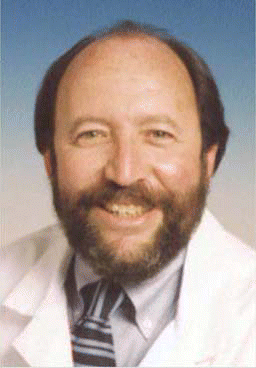Toronto—When dealing with patients who have complex sinus disease who have failed a number of treatments, there are still various approaches the otolaryngologist–head and neck surgeon can use. Some of these include getting additional imaging done to confirm the extent of disease, finding a neurologist who will do specific and even uncommon tests to find the causes of headache, and taking biopsies.
Explore This Issue
May 2006These and other approaches were discussed by a panel of experts here at the meeting of the Eastern Section of the Triological Society. Marvin Fried, MD, Professor and Chair of Otolaryngology–Head and Neck Surgery at the Albert Einstein College of Medicine in New York, NY, moderated.
Dr. Fried presented several case studies for discussion, the first being a post-operative sinusitis patient who returned with various symptoms, including persistent left nasal congestion, eustachian dysfunction, anterior left and posterior right septal deviation, and some retraction of the left tympanic membrane. No mucosal disease was present and he had failed topical steroid treatment.
“There are times when even with the most objective data, you sometimes have to put it aside. We are all concerned about operating on negative scans, but we have to remember we’re not operating on the scans but a patient.” – —Marvin Fried, MD
Identifying Cause May Require Neurology Consult
Panelists concurred that a neurologic consult was needed to look for possible etiologies such as neuropathic pain or atypical migraine.
However, “not all neurologists are created equal,” said James N. Palmer, MD, Assistant Professor of Otorhinolaryngology at the University of Pennsylvania in Philadelphia. He suggested encouraging this sort of patient to go to a neurologist who specializes in headache and facial pain.
In pediatrics, “we seldom see patients with rhinogenic headache,” said Sanjay Parikh, MD, Assistant Professor of Otorhinolaryngology–Head and Neck Surgery and Pediatrics at Albert Einstein College of Medicine in New York, NY. He refers young patients with facial pain to neurologists.
If the neurologist is unsuccessful and there is still pain, additional steps can be taken. “I’m not sure I’m excited about doing it,” said Dr. Palmer, “but I do it. I decongest the patient well, then put cocaine on small pledgets and place it in different spots where I see contact points in the nose,” he said.
Scan Can Provide Further Information
If this successfully relieves pain, then the patient is likely suffering pain due to inflammation. The next step is to get the patient to undergo a computed tomography (CT) scan when the headache returns. If images reveal disease in the area that had been numbed, then the patient may benefit from sinus revision surgery in that area.

Leave a Reply